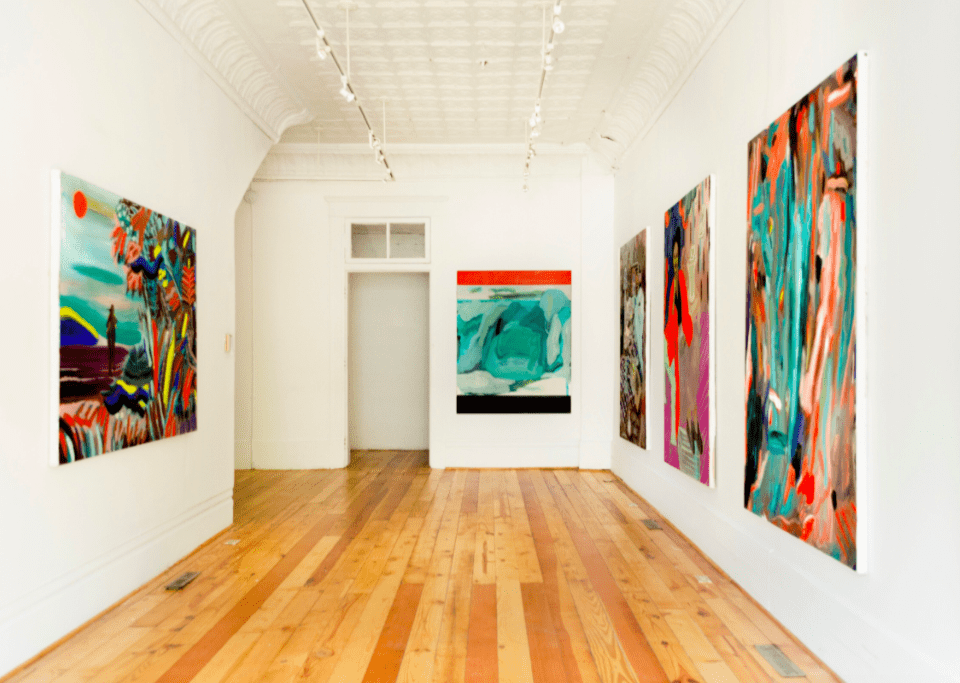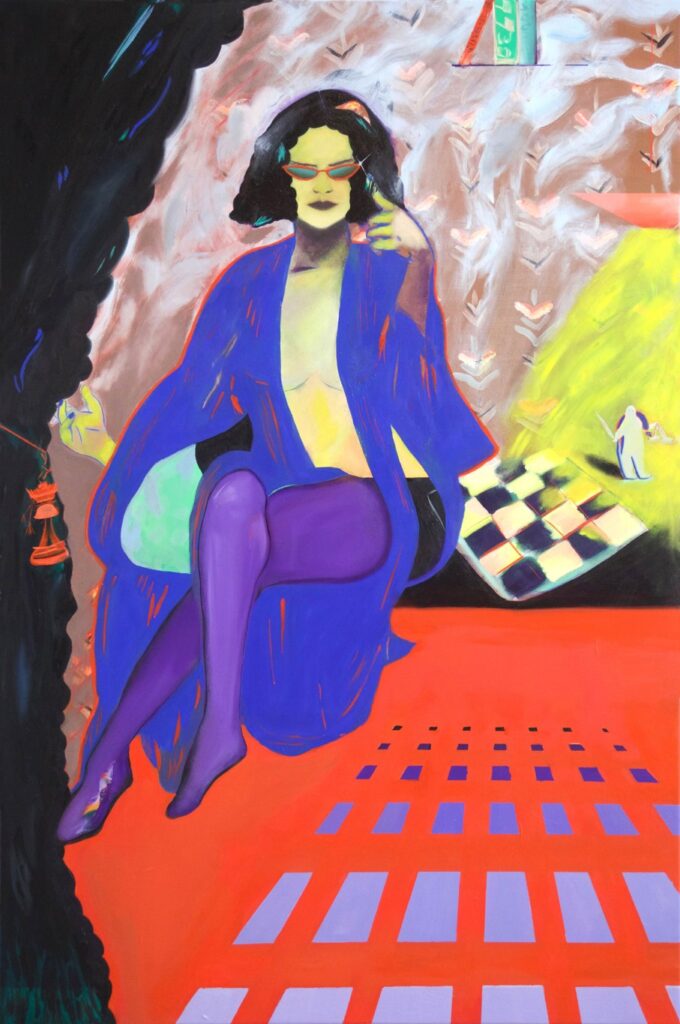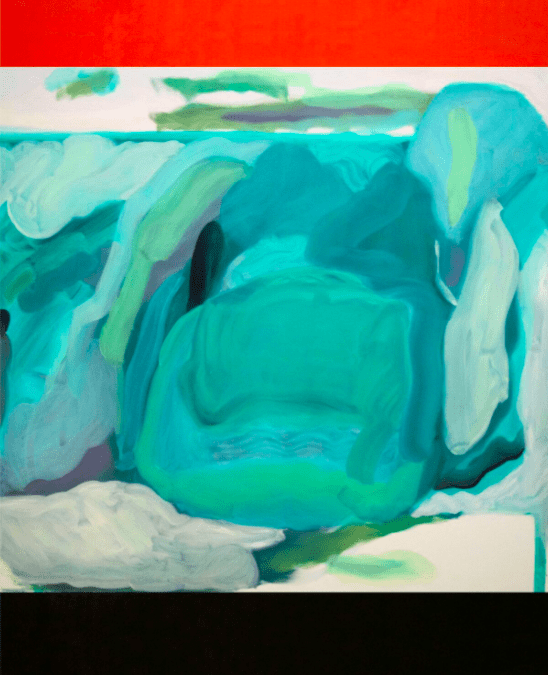A multitude of voices resonate from the paintings in Melissa Carter’s exhibition New Masters at Institute 193. The large-scale, vibrantly colored compositions recall the works of well-known Fauvist, Abstract Expressionist, and Neo-Expressionist artists. Some are abstract, others figurative. Their painted surfaces range from think and fluid, to flat and constrained. Fleshy natural tones contrast with sharp synthetic hues, and bold geometric patterns lay adjacent to patches of ambiguous organic form. In short, Carter’s works fails to cohere. And I mean that in the best possible way. The new masters, as it were, refuse mastery.
Against a male-dominated culture that valorizes authority, autonomy, and self-assertion, Carter’s paintings stress the value of incongruity, relationality, and lack of control. This feminist stance is reinforced by the artist’s decision to directly tackle the sexist and misogynistic terms that structure the art historical canon. Appropriating the objectified female bodies and exoticized spaces that characterize much modern figurative painting from Henri Matisse to David Salle, Carter transforms them into inscrutable figures set in dreamlike-spaces of their own making. Trans and gender non-conforming figures like the ones found in Chess Master with Blue Gown (2018) and The Snake Charmer (2018) resist the stabilization and consolidation of gender and sexuality into hierarchical normative categories. Gazing out confidently at the viewer (often from behind sun glasses), Carter’s figures compel us to look at them, but also refuse full disclosure. As the curator Emma Friedman-Buchanan perceptively states in the text that accompanies the exhibition: “In Carter’s representations, the one-sided power dynamic between artist and model dissolves through her literal repositioning of women in art.â€
In her abstract compositions, Carter challenges the masculinist terms of sovereignty, virility, and force that have characterized much modern painting, particularly abstract expressionism. In her work I’m an Oil Man (2017), for example, the amorphous sea-green subject at the center is bound with stark bands of red and black paint at the top and bottom edges. Unlike paintings by Jackson Pollock or Willem De Kooning the gestural marks do not appear as free and authentic expressions of the self, but instead as polyvocal and ambivalent responses to the constraints of the frame. Spoken from the non-dominant position of the female artist, Carter debunks the myth of unfettered self-expression. As the title suggests, patronage from captains of industry (such as wealthy oil men) has historically tethered itself to notions of artistic genius that tout the virtues of independence, self-reliance, and self-aggrandizement, thus marginalizing artists whose experience does not align with their world view.
In an art world in which women still do not receive equal compensation, professional recognition, critical acclaim, or gallery and museum representation (with work by women artists making up only 3-5% of permanent collections in the US and Europe), exhibitions of work by feminist artist like Melissa Carter are desperately needed. They not only combat aesthetic biases and discriminatory canons, but they also point a way forward to new approaches to the artistic process.
New Masters will be on view at Institute 193 until October 13th. For more information about the show, as well as gallery hours and location, go to the Institute 193 website.



Miriam Kienle is Assistant Professor of Art History at the University of Kentucky.




